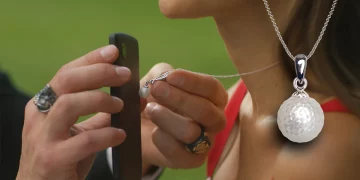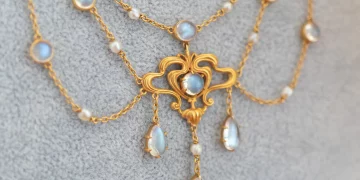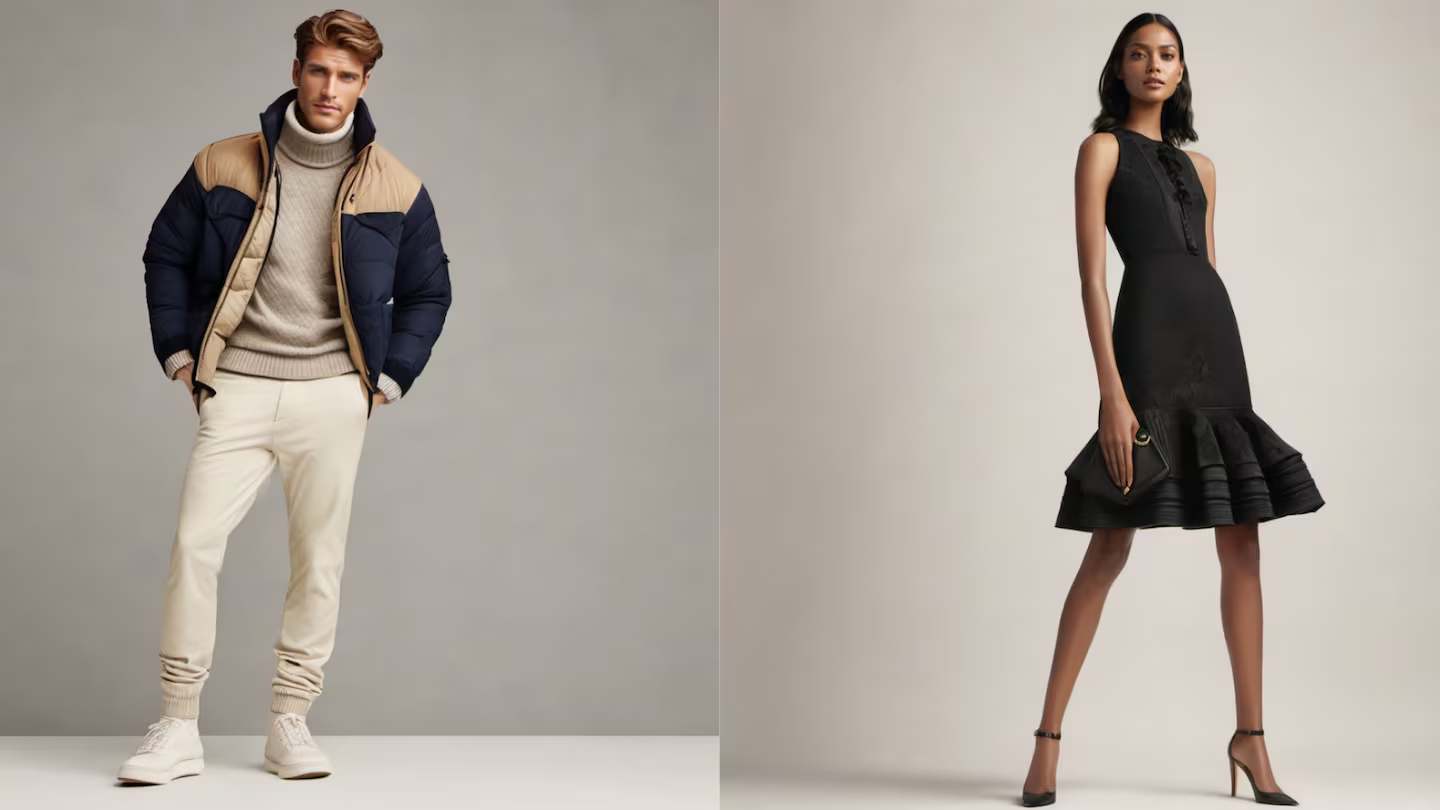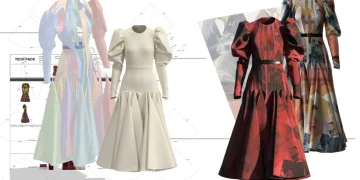Abstract
The jewelry industry is undergoing a remarkable transformation in its design principles, driven by changing consumer expectations, technological advancements, and cultural shifts. As we step into the latest design trends of the year, we are witnessing a bold departure from traditional aesthetics, as designers explore new materials, innovative techniques, and experimental concepts. This article explores how this year’s jewelry design trends challenge the norms of traditional beauty in the jewelry industry, analyzing elements such as geometric designs, the fusion of art and craft, the rise of sustainability, and the growing influence of digital technology. Through examining these developments, we will gain insight into how the jewelry market is evolving and what the future of jewelry aesthetics might look like.
1. Introduction
1.1 The Evolution of Jewelry Design Aesthetics
Jewelry design has long been defined by established patterns of beauty, influenced by cultural heritage, craftsmanship, and material value. Traditional aesthetics in jewelry often celebrate symmetry, delicate ornamentation, and timeless motifs. Over the years, designs have incorporated influences from art, fashion, and social movements, but the core principles of craftsmanship and classical design remained largely unchanged.
However, recent years have seen a shift toward bold experimentation, where designers are challenging conventional boundaries. The emergence of new design philosophies, along with technological and social advancements, has brought a fresh perspective to jewelry making, causing a redefinition of what jewelry can represent and how it should look.
1.2 Defining Traditional Jewelry Aesthetics
Traditional jewelry aesthetics often adhere to certain principles:
- Symmetry and Balance: Jewelry is often designed to be harmonious, with equal proportions, symmetrical designs, and balanced elements.
- Timelessness: Classic motifs such as floral patterns, heart shapes, and intricate metalwork are often seen as symbols of eternal beauty and craftsmanship.
- Material Richness: Precious metals like gold, silver, and platinum, alongside diamonds and gemstones, have been the go-to materials for high-end jewelry, emphasizing rarity and durability.
- Cultural and Historical Symbols: Many traditional designs draw upon specific cultural icons and historical references, encapsulating the essence of heritage and identity.
However, in the present year, we are seeing a rise in designs that challenge these well-established norms.
2. Breaking Free from Tradition: Key Trends in Contemporary Jewelry Design
2.1 Embracing Minimalism and Geometry
Minimalism in jewelry design has been a growing trend, with clean lines and geometric forms replacing the elaborate details of past designs. This minimalist approach reflects the broader cultural move toward simplicity and functionality, which is also evident in other design industries, such as architecture and fashion.
- Geometric Shapes: Designers are turning to basic shapes like triangles, circles, and squares to create striking, modern pieces that focus on the form rather than decoration. Geometric designs are clean and symmetrical but challenge the over-the-top embellishment seen in traditional jewelry.
- Abstract Forms: A move toward more abstract and conceptual designs has opened the door for more experimental pieces. This year, designers are exploring how asymmetry and irregularity can express beauty, breaking free from the symmetry that once dominated traditional jewelry design.
2.2 Sustainability and Ethical Design: A Radical Shift
As consumers become more conscious of environmental and ethical issues, sustainability is playing an increasingly important role in shaping jewelry design. Traditional jewelry was often associated with unsustainable practices, such as the use of conflict diamonds or mining that damages ecosystems. Today’s designers are pushing for responsible production methods that are radically changing traditional jewelry aesthetics.
- Recycled Materials: Jewelry designers are turning to recycled and upcycled metals, stones, and other materials to create pieces that tell a story of sustainability. The incorporation of reclaimed gold, silver, and even diamonds is becoming more common, challenging the once luxurious, resource-intensive production methods.
- Lab-Grown Gemstones: The increasing popularity of lab-grown diamonds and gemstones is another major disruptor to traditional jewelry aesthetics. These stones, which offer ethical and environmental benefits, allow designers to experiment with larger, more affordable stones in unconventional settings, thus challenging the classic notion of the rarity of diamonds.
2.3 Technology Integration: 3D Printing and Digital Customization
One of the most significant disruptions in the jewelry industry in recent years is the integration of technology. Traditional methods of casting, handcrafting, and shaping metals are being replaced by cutting-edge technologies like 3D printing and digital design, enabling unprecedented precision and creative freedom.
- 3D-Printed Jewelry: The use of 3D printing allows designers to create highly intricate, detailed, and complex designs that were once impossible or impractical to produce. These technologies allow for customization at an individual level, creating pieces that are personalized to the wearer’s taste.
- Digital Design Platforms: Digital platforms have allowed consumers to design their own jewelry, offering unprecedented control over the aesthetic process. This level of customization has disrupted traditional jewelry retail, where pre-designed pieces were the norm.
2.4 Organic and Nature-Inspired Designs
While traditional jewelry designs often focus on symmetrical and orderly motifs, a new trend this year has seen a return to the organic, embracing the natural irregularities of form and texture. Jewelry is becoming more about expressing the raw beauty of the world, rather than adhering to idealized perfection.
- Nature-Inspired Shapes: Designers are looking to the environment for inspiration, mimicking the curves and shapes of plants, animals, and natural phenomena. Textured surfaces that evoke the feel of tree bark, coral reefs, and ocean waves are popular, moving away from the perfect polish of traditional jewelry.
- Biomimicry: Some designers are even turning to biomimicry, using principles found in nature to inspire the functionality and form of jewelry, exploring a deeper connection between natural beauty and human-made artifacts.
2.5 Cultural Appropriation and Global Influences
The ongoing trend of globalization and cultural exchange has significantly influenced contemporary jewelry design. Designers are increasingly drawing on a wide range of cultural references, blending traditional and contemporary aesthetics from around the world. However, this blending of cultures also raises questions of cultural appropriation, forcing designers to engage more thoughtfully with the origins of the designs they borrow.
- Fusion of East and West: Jewelry designers are combining traditional Eastern motifs, like those found in Chinese, Indian, and Japanese jewelry, with Western design sensibilities. This fusion creates pieces that are more diverse, inclusive, and reflective of a globalized world.
- Ethnic and Tribal Patterns: Traditional African, South American, and Indigenous designs are also influencing contemporary jewelry trends. The use of beads, symbols, and other culturally significant elements is leading to the creation of more eclectic and multi-faceted pieces.
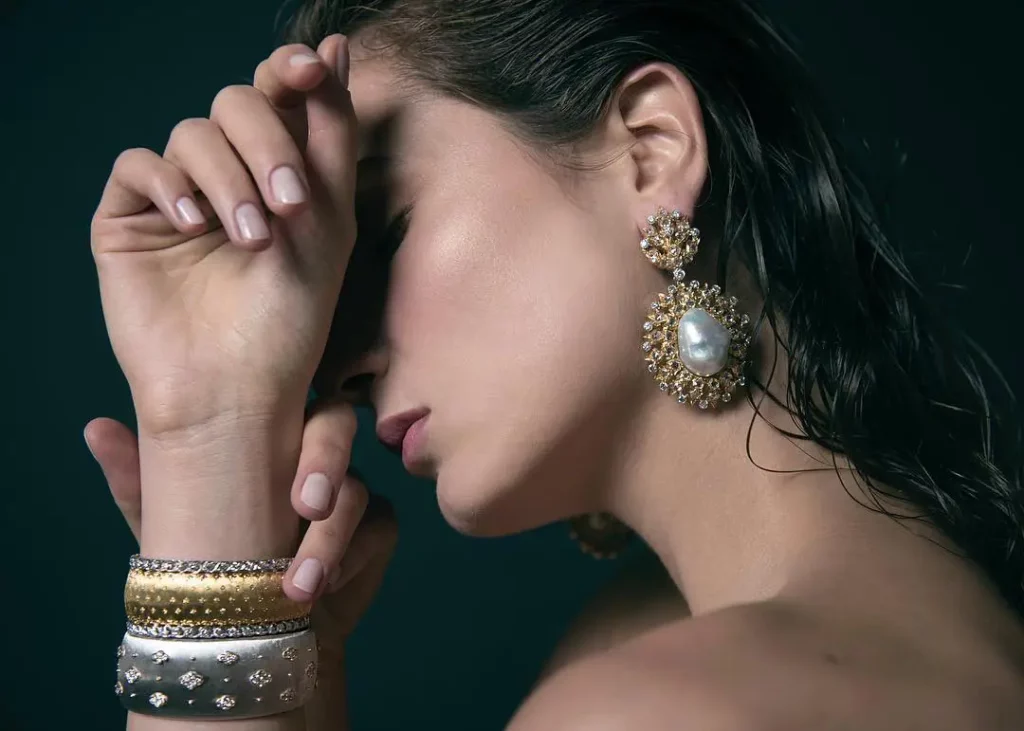
3. The Disruption of Traditional Beauty: A Shift in Consumer Expectations
3.1 The Democratization of Luxury
As luxury jewelry becomes more accessible to a broader audience, traditional notions of “luxury” are evolving. Consumers today are looking for more personalized, unique, and meaningful pieces, which disrupts the one-size-fits-all concept of high-end jewelry.
- Mass Customization: The ability to design or customize jewelry online is empowering consumers and providing them with options beyond the traditional luxury jewelry offering. This disruption is particularly evident in the rise of direct-to-consumer (DTC) jewelry brands that cater to niche markets and emphasize individuality over exclusivity.
- Re-Defining Value: Instead of focusing purely on price or rarity, consumers are placing greater emphasis on the emotional or personal significance of a piece. This trend challenges traditional ideas of value, suggesting that sentiment, craftsmanship, and ethical considerations may carry more weight than the material worth of a piece.
3.2 Digital Influence: Social Media and the New Aesthetic
Social media platforms, especially Instagram and TikTok, have become vital in shaping consumer tastes and trends in the jewelry world. Jewelry is no longer just an accessory but a status symbol and a form of self-expression, thanks to the exposure of influencers, celebrities, and user-generated content.
- Social Media Influencers: Jewelry brands are now using social media influencers to market their products to a younger, tech-savvy audience. This has led to a focus on more contemporary and experimental designs, as influencers often showcase bold, unique, and trendy pieces that break away from traditional aesthetics.
- Instant Access and Trend Cycles: The speed at which trends spread and evolve online has accelerated the fashion cycle, leading to more rapid shifts in jewelry design. As trends emerge and fade more quickly, the jewelry industry is increasingly focused on creating pieces that reflect the immediate tastes of the digital community.
4. Conclusion: The Future of Jewelry Design Aesthetics
The trends of this year signal a dramatic departure from the traditional jewelry design aesthetics that have long dominated the industry. From minimalist geometric forms to the rise of sustainability, technological integration, and cultural blending, jewelry design is becoming more inclusive, accessible, and reflective of modern values.
As the industry continues to evolve, it will be interesting to see how traditional designers adapt to these changes and how new trends will challenge our understanding of luxury, beauty, and craftsmanship. In the end, the jewelry of the future may not only look different but may also carry new meanings—integrating personal, ethical, and cultural narratives into each piece.




